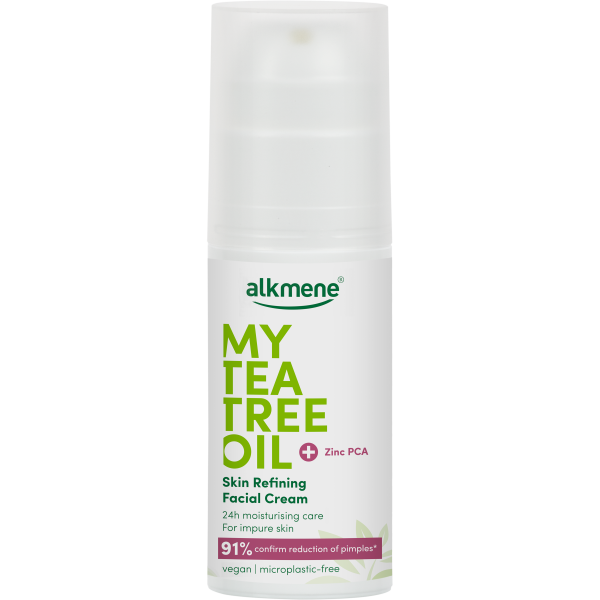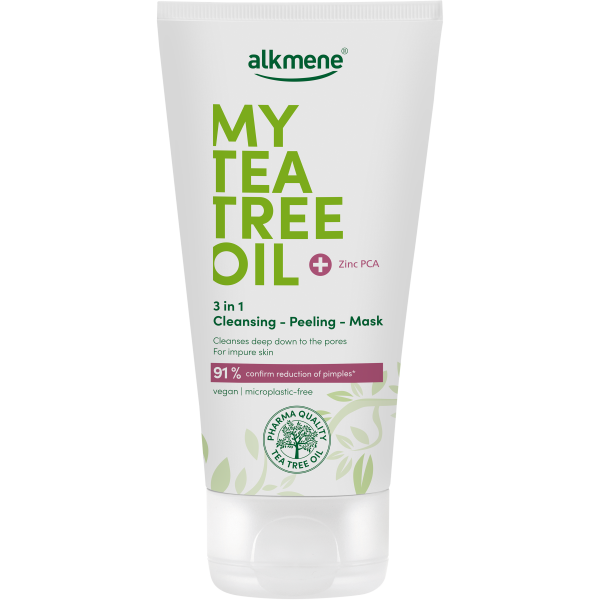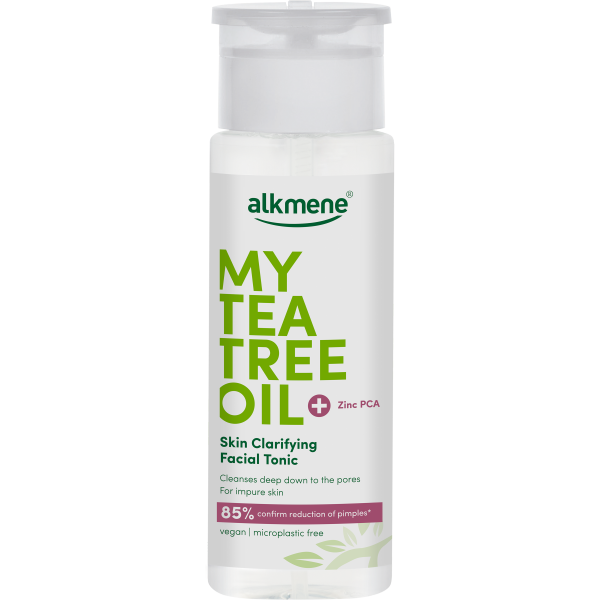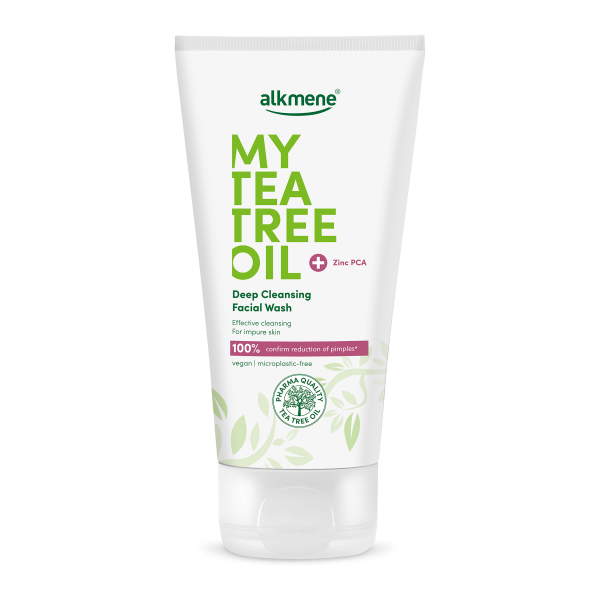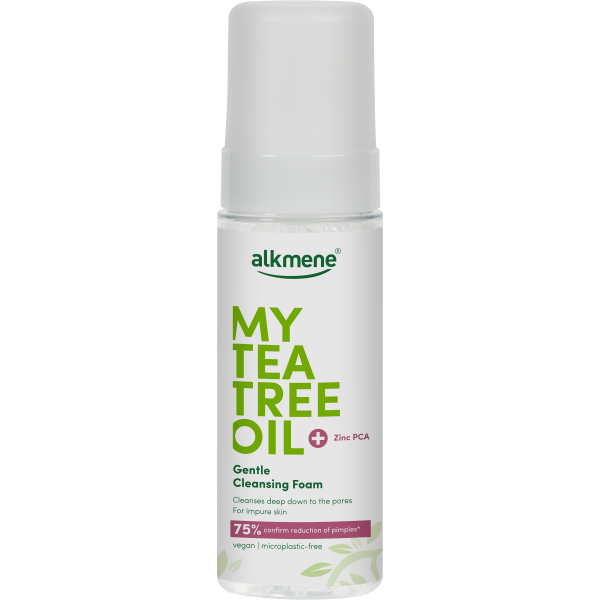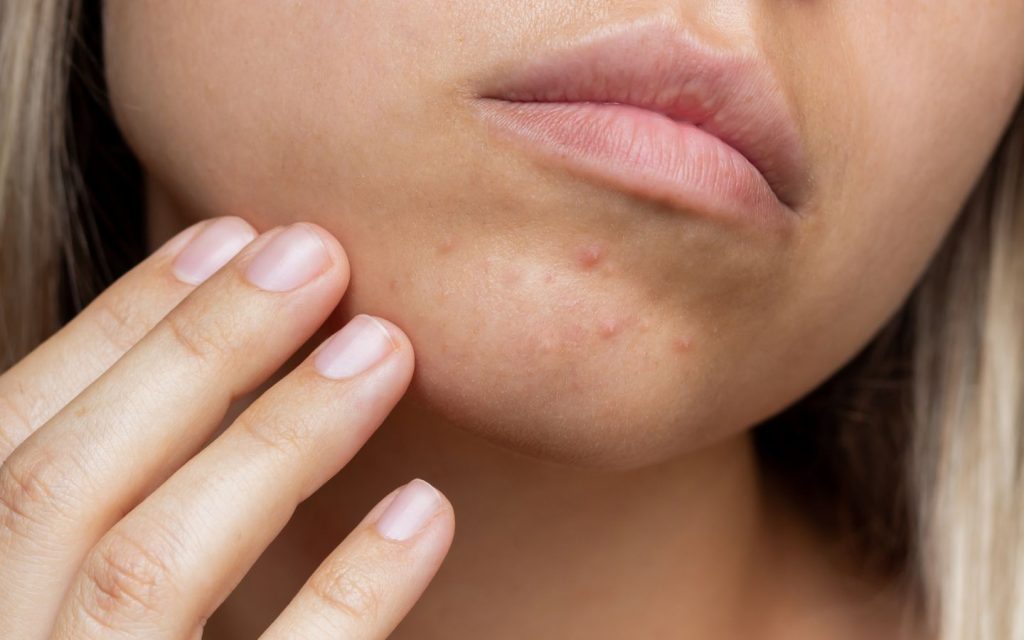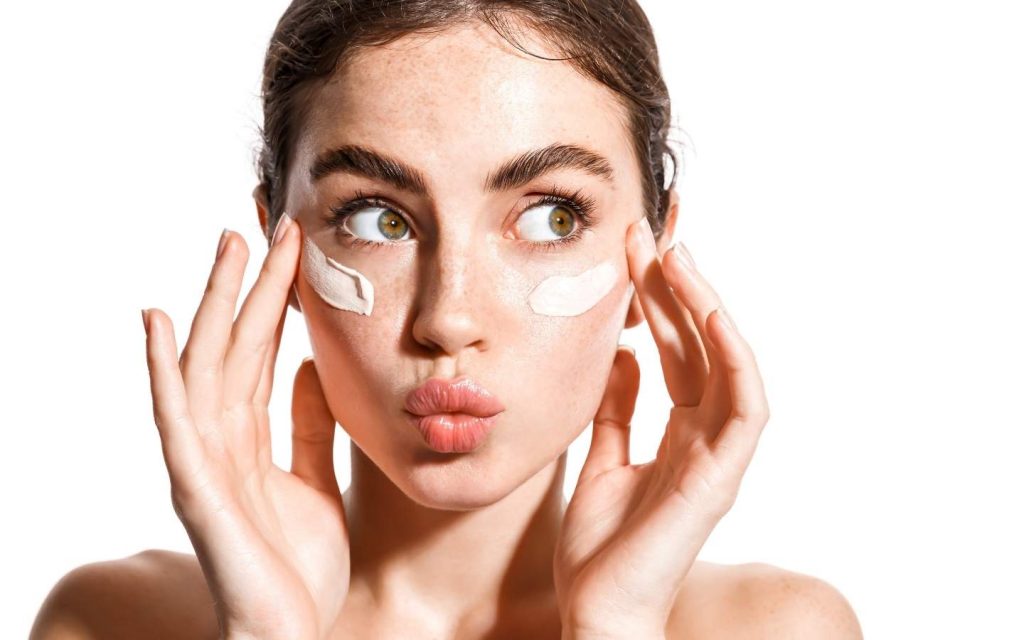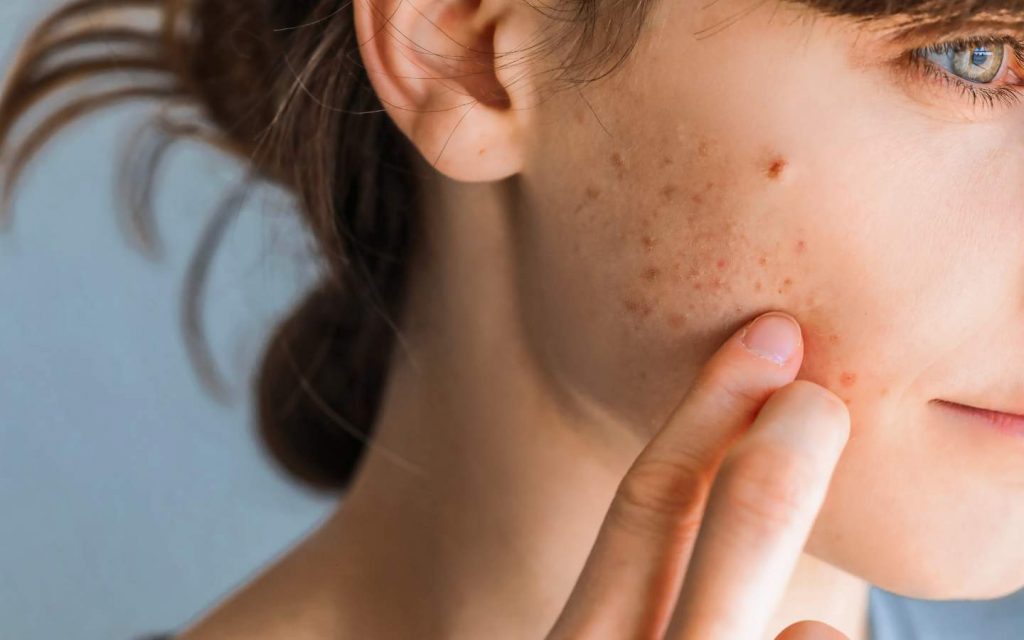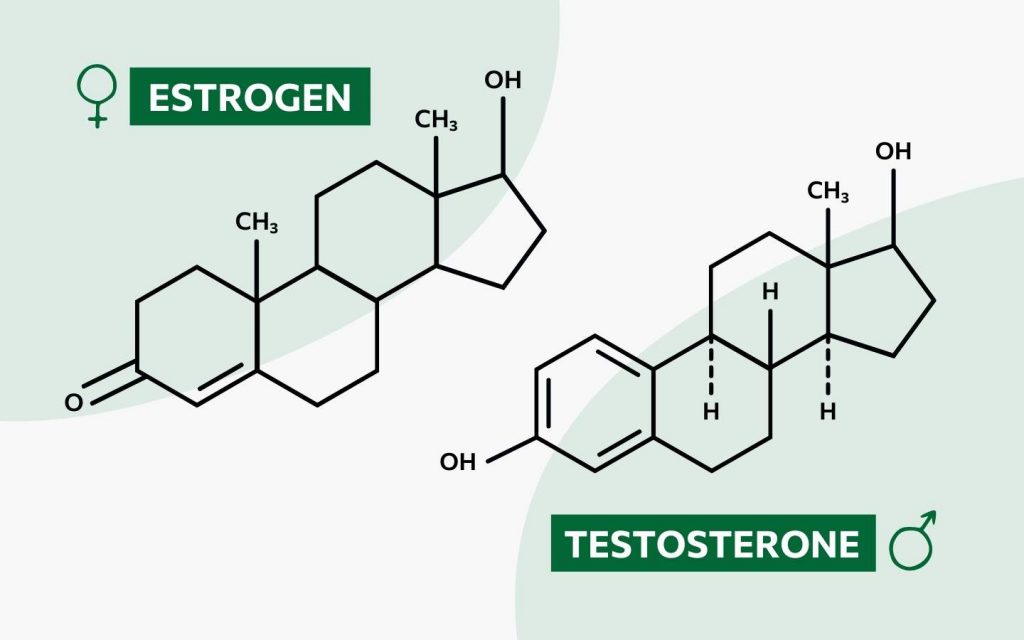
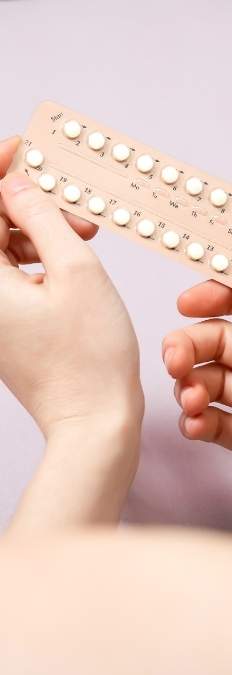

This article has been reviewed by:
Alexandra Beck
Cosmetician
The pill is usually prescribed to young women not only for contraception, but also to improve the appearance of their skin during their teenage years. Because it is no secret that there are many side effects associated with taking the pill, more and more women are deciding to stop taking it and switch to a hormone-free contraceptive. After discontinuing the pill, about 30% of women complain of blemished and irritated skin or even acne. The pill does not solve causes of blemished skin in teenage years, but only suppresses their symptoms. Therefore, especially women who have been diagnosed with acne in the past suffer from pimples after stopping the pill.
Are you affected by skin blemishes such as pimples after stopping the pill and neither know where they come from nor how you can get rid of them most effectively? Then we will inform you in the following article how these pimples and skin blemishes develop after discontinuation of the pill, how long they last and how they can be treated.
If you want to learn something about the female cycle in advance, check out this post.
Causes of blemished skin and pimples after stopping the pill
Cause 1: Testosterone and the pill
The most common cause is a hormonal imbalance and the associated overproduction of the male hormone testosterone. The reason for this is that the body first has to regulate itself again and get used to not receiving a daily dose of artificial hormones from the pill. Until this balance and the body’s own production is restored, pimples, blemishes, skin irritations, dry or oily skin, and skin redness may occur. Frequently affected areas of the body are the face, back and décolleté.
In order to understand what happens in the body when the pill is taken or discontinued, the various hormones must first be distinguished from one another and their relationship to one another illustrated:

Female sex hormones are called estrogens, male sex hormones are called androgens. The most important androgens are testosterone and dihydrotestosterone (DHT). Both sexes produce both estrogens and androgens. Testosterone and DHT, after being absorbed from the blood, can be converted to estrogen in cells. Compared to men, women have only one-tenth of the androgen concentration in the body. In women, the secretion of androgens plays an important role in the menstrual cycle and libido. Overproduction of androgens leads to increased sebum formation in the skin and thus acne. To treat this acne, many women use an antiandrogenic birth control pill.

There are androgenic and anti-androgenic pills on the market. Both contain synthetically produced progestins. Progestins are similar to the body’s own progesterone and play a role in the development and maintenance of pregnancy. Androgenic pills include preparations containing the progestins cyproterone acetate, chlormadinone acetate, dienogest, and drospirenone. Anti-androgenic pills include preparations containing the progestins norethisterone acetate, levonorgestrel, gestodene, norgestimate, and etonogestrel. Androgenic and anti-androgenic pills can be used as a combination or monopreparation. A combination preparation contains, in addition to synthetically produced progestin, synthetically produced estrogen. Monopreparations contain only progestin.

Synthetically produced hormones differ in many respects from the body’s “normal” hormones. Some synthetically produced hormones have completely different functions than the body’s own hormones and also differ in their molecular structure.
Anti-androgenic pills inhibit the male hormones required for sebum production through the progestin they contain and reduce these in the female body. Thus, an overproduction of sebum in the skin pores is prevented and the skin’s appearance improves.
What happens when the pill is discontinued?
When the pill is discontinued, the formation of testosterone can no longer be inhibited, as the body no longer has a synthetic progestin available. Due to the subsequent overproduction of testosterone, there is also an overproduction of sebum in the sebaceous glands. Sebum in itself is important to transport toxins to the outside, to protect the skin from pathogens and to keep it from drying out. However, if too much is produced, it leads to clogging of the hair ducts. Clogged hair ducts can very easily lead to inflammation, as the oily sebum is a good breeding ground for germs and bacteria. These inflammations result in pus-filled and painful pimples.
Cause 2: weakened detoxification organs as a reason for blemished skin
The detoxification organs in our body mainly include the intestines, the liver, the kidneys and the skin. They are responsible for breaking down harmful substances such as medications and also the synthetic hormones in the pill. Because the body is supplied with these synthetic hormones on a daily basis, sometimes for years, it is possible that the internal detoxification organs are overloaded. Everything that the internal organs are now unable to do in terms of detoxification, the skin takes over. This detoxification process via the skin can lead to impurities after stopping the pill.
Treatment of blemished skin and pimples after stopping the pill
After you stop taking the pill, your body needs time to regulate itself and wean itself off the artificial female hormones. This state usually lasts three to twelve months. The length of time you have been taking the pill and the degree to which you have become accustomed to the artificial hormones can influence the regulation process. Thus, the period of time until the body returns to its initial state varies from woman to woman.
In the following sections, we will explain what measures you can take during this time (or also preventively) to improve the skin’s appearance in the long term and to avoid or reduce pimples after discontinuing the pill.
If you also want to learn more about the causes of blemished skin and how to treat it, we recommend this article.
Since nutrition has a significant influence on the appearance of our skin, you should eliminate some foods from your diet. These include white flour products, industrial sugar, convenience foods and milk. Studies have proven that milk is one of the strongest acne promoters. This includes all types of dairy products including cheese, yogurt and cream. The reason dairy is so bad for the skin is because of the growth hormone IGF-1, which is only for baby animals and not humans. Dairy products and sugar increase the release of insulin. The more insulin produced in the body, the more DHT is in the body. This, in turn, leads to the stimulation and overproduction of sebum and, ultimately, blemished skin.
If you want to learn more about nutrition for blemished skin click here.
In order to strengthen your organs, the body must be supplied again with all minerals and nutrients that have been removed by the pill. Here it is useful to determine where there is a deficiency through a large blood count. If the deficiency cannot be compensated for by diet alone, dietary supplements can provide relief. Particularly important nutrients for the skin are Q10, vitamin C, zinc, vitamin D3 and vitamin A. Zinc in this case not only promotes the immune system, but also has an anti-inflammatory effect.
To strengthen the digestive system and the liver, it is advisable to include bitter substances in your diet (e.g. tea cure). For example, bitter substances are found in artichokes, arugula, peppermint and chicory. Another effective home remedy to help the liver detoxify is liver wraps. In this, you place a damp towel on your right upper abdomen and place a hot water bottle on this towel. Then wrap a larger towel around the hot water bottle and your body. These wraps promote blood flow to the liver and also to the gallbladder.
In order to treat the skin properly after stopping the pill, a gentle facial care routine should be introduced that does not further irritate the skin.
In your skin care products, you should make sure that no chemical or drying substances such as silicones or parabens are used. If the skin dries out, the sebaceous glands produce even more sebum to compensate for this dryness. The consequences are oily and irritated skin. If you use products with chemical additives, you should switch to natural and nourishing ingredients to rebalance the skin.
Products containing aloe vera and tea tree oil are particularly beneficial for the skin. Aloe vera is particularly moisturizing and nourishing. The medicinal plant can regulate sebum production and is absorbed into the lowest skin layer without being greasy.
Tea tree oil has an antiseptic, antibacterial and antimicrobial effect. Its cleansing and nourishing ingredients are very well suited to care for the skin after discontinuation of the pill and to counteract further pimples and impurities.
Essential oils such as tea tree oil, lavender oil, black cumin oil and chamomile oil help against acutely inflamed areas. They have an anti-inflammatory effect and soothe the affected skin area. Particularly suitable here is the MY TEA TREE OIL Anti Spot Stick. It contains a soothing formula from the active combination of tea tree oil and zinc PCA, through which pimples and blackheads are demonstrably reduced within 2h.
![]()


